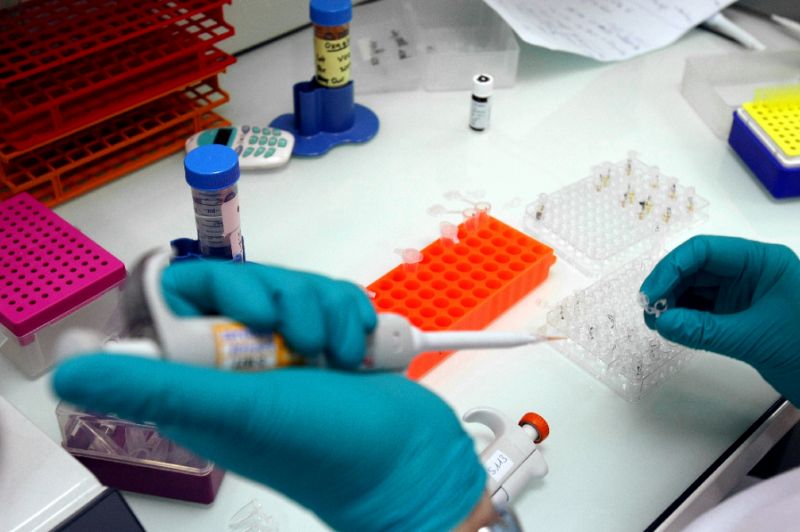Bleeding from nose in adults and children is a common problem and most of us experience this problem sometime in our lifetime.
Bleeding from nose in children
Nose is a very vascular organ and subsequently even minor trauma to nose may cause significant bleeding from nose. This is especially worrisome to parents of children experiencing this condition.
The most common cause of bleeding in children are
- trauma
- foreign body in nose
- infections of nose
- coagulation disorder and blood vessel disorders
Trauma to nose may be due to external factors or maybe self-inflicted. This is especially true in the case of children with the habit of nose picking. These children create small ulcers in the nasal septum due to which the bleeding may occur. The parents are worried with frequent episodes of nose bleeding. They commonly state that the children starts bleeding even when they do not touch the nose. This is usually due to the ulcer which is covered with the scab and whenever the scab falls off the child may experience bleeding even during sleep.
Another common cause of bleeding from nose and young children are unnoticed or neglected foreign bodies in the nose. These cause local irritation and infection and cause bloody discharge which is usually unilateral. So any child having unilateral bloody discharge which may be foul smelling should be investigated for a foreign body in the nose.
The infections in the nose such as acute or chronic rhinosinusitis may also be associated with bleeding from the nose. These may also be associated with adenoid hypertrophy especially in case of children. The infections may be caused by a variety of viral, bacterial and fungal agents. The children experience nasal blockage, mouth breathing and discharge from the nose. The discharge may be blood stained or may be associated with frank bleeding from the nose.
Another major cause of bleeding from the nose in paediatric population can be coagulation disorders or blood vessel disorders. Children having hereditary coagulopathies such as deficiency of factor VII and factor IX may be associated with bleeding from the nose.
Acquired causes such as use of anticoagulants, liver disease, vitamin k deficiency and disseminated intravascular coagulation may be associated with frank bleeding from the nose.
Children having platelet disorders such as thrombocytopenia which may be congenital or acquired or having platelet dysfunctions which may be congenital such as, in cases of Won Willebrand and Glanzmann’s thrombasthenia may be associated with bleeding from the nose. Blood vessel disorders such as osteogenesis imperfecta and hereditary haemorrhagic telangectasia may be associated with epistaxis or bleeding from the nose.
Apart from this, a common cause of bleeding from the nose in case of children, especially male children of adolescent age is a condition which is known as juvenile nasopharyngeal angiofibroma this condition, is associated with a nasal mass which causes nasal obstruction and causes a lot of bleeding from the nose. Advanced cases may be associated with changes in the vision or protrusion of the eyeball. It is important to recognize this condition, as it may cause significant bleeding if left unrecognized and can also extend into the brain and cause various complications due to intracranial extension.
MANAGEMENT OF NASAL BLEEDING IN CHILDREN
1.To stop nose picking– Children and their caregivers should be advised against nose picking and forceful blowing of the nose, use of lubricating agents such as Vaseline in the nasal vestibule keeps the area moist which helps in preventing dryness and scab formation. The children can also be given local agents such as saline sprays which prevent formation of scabs and dryness in the nasal cavity.
2. If there is significant bleeding then the child should be made to sit rather than lie down as this will cause the blood to fall posteriorly in the oral cavity. The nose should be pinched and child should be asked to breathe gently through the mouth. This should be done for at least 5 to 7 minutes which is the normal clotting time. In case of recurrent bleeds, this may require application of caustic agent to the offending blood vessel or diathermic coagulation of the vessel.
BLEEDING IN ADULT POPULATION
Adults also frequently experience bleeding or epistaxis from the nose which can occur from one side of the nose or from both the sides in some cases.
The most common causes of bleeding in adult population are as follows
- infections
- trauma
- idiopathic
- neoplastic
- drug induced (RHINITIS MEDICAMENTOSA)
- inhalants
- acquired coagulopathies
- drugs – anticoagulants, antiplatelet
- others such as liver failure, HIV infection
Management of epistaxis in adult population
In case of Active bleeding from the nose in adults they should be clinically examined. Both local and systematic examination should be performed.
Local examination can be done by anterior and posterior rhinoscopy and /or rigid endoscopy. This helps in identification of the site of bleeding and the bleeding can be controlled with the help of coagulation of the offending blood vessel by using diathermy.
In case the facilities of endoscopy are not available then the patient can be managed by nasal packing. Depending upon the site of the bleeding the patient may require anterior nasal packing or posterior nasal packing or both.
The resistant cases may require surgical intervention in the form of arterial ligation, submucosal resection, endoscopic cautery, angiography and embolization.
The underlying cause for epistaxis is important to be recognised in all the cases.

By Dr.Shweta Gogia
The Author is ENT Specialist and Surgeon at Sir Gangaram Hospital, New Delhi










